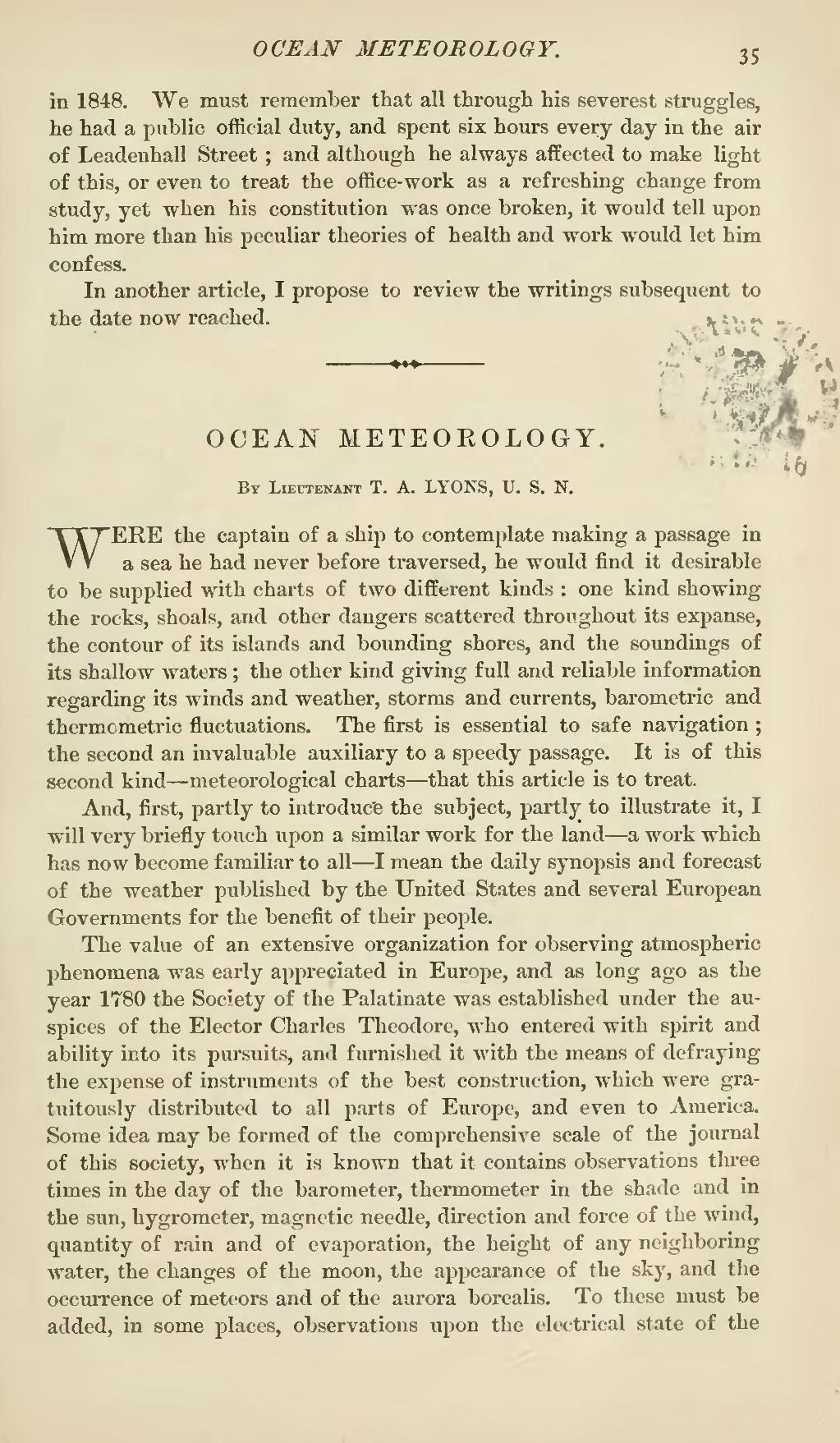in 1848. We must remember that all through his severest struggles, he had a public official duty, and spent six hours every day in the air of Leadenhall Street; and although he always affected to make light of this, or even to treat the office-work as a refreshing change from study, yet when his constitution was once broken, it would tell upon him more than his peculiar theories of health and work would let him confess.
In another article, I propose to review the writings subsequent to the date now reached.
| OCEAN METEOROLOGY. |
By Lieutenant T. A. LYONS, U. S. N.
WERE the captain of a ship to contemplate making a passage in a sea he had never before traversed, he would find it desirable to be supplied with charts of two different kinds: one kind showing the rocks, shoals, and other dangers scattered throughout its expanse, the contour of its islands and bounding shores, and the soundings of its shallow waters; the other kind giving full and reliable information regarding its winds and weather, storms and currents, barometric and thermometric fluctuations. The first is essential to safe navigation; the second an invaluable auxiliary to a speedy passage. It is of this second kind—meteorological charts—that this article is to treat.
And, first, partly to introduce the subject, partly to illustrate it, I will very briefly touch upon a similar work for the land—a work which has now become familiar to all—I mean the daily synopsis and forecast of the weather published by the United States and several European Governments for the benefit of their people.
The value of an extensive organization for observing atmospheric phenomena was early appreciated in Europe, and as long ago as the year 1780 the Society of the Palatinate was established under the auspices of the Elector Charles Theodore, who entered with spirit and ability into its pursuits, and furnished it with the means of defraying the expense of instruments of the best construction, which were gratuitously distributed to all parts of Europe, and even to America. Some idea may be formed of the comprehensive scale of the journal of this society, when it is known that it contains observations three times in the day of the barometer, thermometer in the shade and in the sun, hygrometer, magnetic needle, direction and force of the wind, quantity of rain and of evaporation, the height of any neighboring water, the changes of the moon, the appearance of the sky, and the occurrence of meteors and of the aurora borealis. To these must be added, in some places, observations upon the electrical state of the

